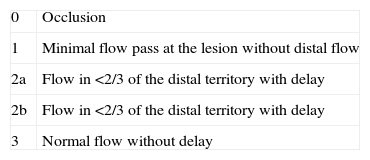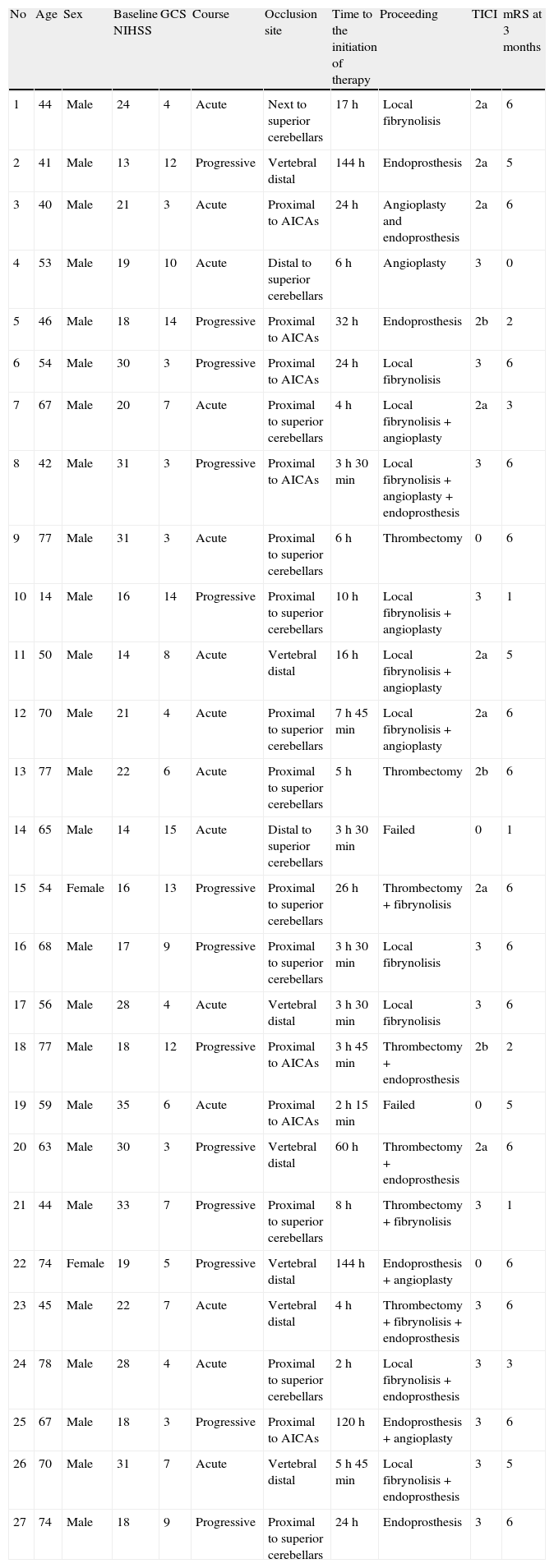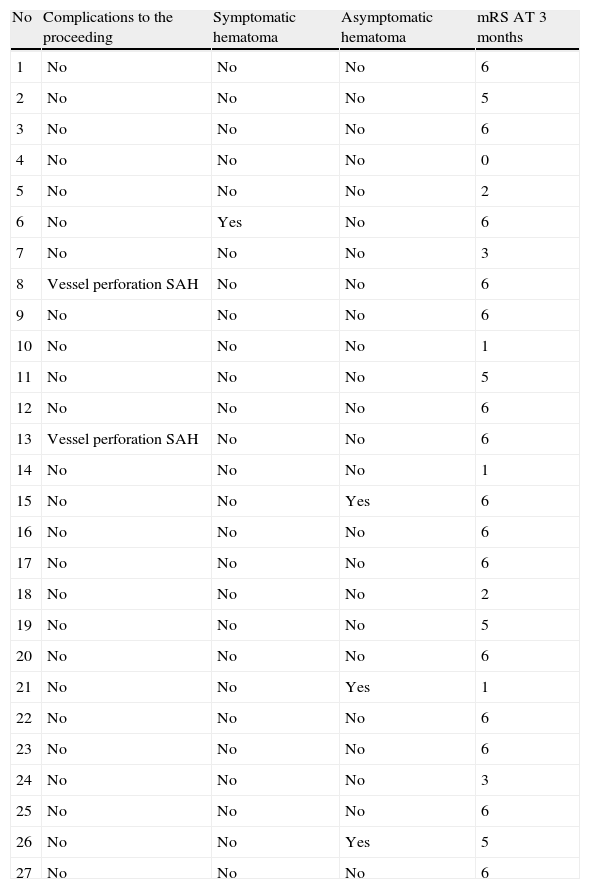To evaluate the recanalization rate and clinical outcome three months after endovascular treatment for vertebrobasilar occlusion before the placement of stentrievers.
Materials and methodsWe reviewed all cases of basilar thrombosis treated with endovascular techniques at our center. We reviewed the clinical outcomes with the main objective of determining the recanalization rate and the secondary objective of evaluating the outcome using the modified Rankin scale (mRS) three months after treatment. We assessed clinical and angiographic variables and correlated them with outcome and complications.
ResultsWe reviewed a total of 27 consecutive patients (mean age, 58.1±15.5years; median National Institutes of Health Stroke Scale (NIHSS), 21, interquartile range, 18–29; median Glasgow coma score (GCS) 7, interquartile range, 4–9.5). The mean time between the onset of symptoms and endovascular treatment was 26.3±41.7h. Complete or partial recanalization was achieved in 23 (85.1%) patients. Three months after treatment, 16 (59.2%) had died and 6 (22.2%) had good outcome (mRS≤2).
ConclusionEndovascular treatment achieved a high rate of recanalization of occlusions of the basilar artery. Nevertheless, a high percentage of the patients did not have a good outcome. New materials might improve the prognosis in these patients.
Evaluar la tasa de recanalización y la evolución clínica a los 3 meses tras el tratamiento endovascular de la oclusión vertebrobasilar, antes de la introducción de las endoprótesis recuperadoras («stentrievers»)
Material y métodosRecogida consecutiva de todos los casos de trombosis basilar tratados mediante técnicas endovasculares en nuestro centro. Se revisó de forma retrospectiva su evolución clínica. Nuestro objetivo primario fue evaluar la frecuencia de recanalizaciones alcanzadas, y, como objetivo secundario, valorar la evolución con la escala modificada de Rankin (mRS) a los 3 meses. Valoramos variables clínicas y angiográficas correlacionándolas con la evolución y las complicaciones.
ResultadosSe recogieron un total de 27 pacientes, con una edad media de 58,1 y desviación estándar de±15,5 a¿nos, la mediana de la escala National Institutes of Health Stroke Scale (NIHSS) fue 21, rango intercuartílico 18–29, y la mediana de la escala de coma de Glasgow (GCS) fue 7, rango intercuartílico 4–9,5. El tiempo medio y la desviación estándar desde el comienzo del cuadro clínico hasta el tratamiento intraarterial fue de 26,3±41,7 horas. Se consiguió una recanalización parcial o completa en 23 enfermos (85,1%). A los 3 meses 16 pacientes (59,2%) habían fallecido y 6 (22,2%) presentaban una buena evolución (mRS≤2).
ConclusiónEl tratamiento endovascular consigue una alta tasa de recanalizaciones en las oclusiones de la arteria basilar. Sin embargo la evolución fue negativa en un porcentaje elevado de enfermos. Es de esperar que el uso de nuevos materiales mejore el pronóstico de estos pacientes.











